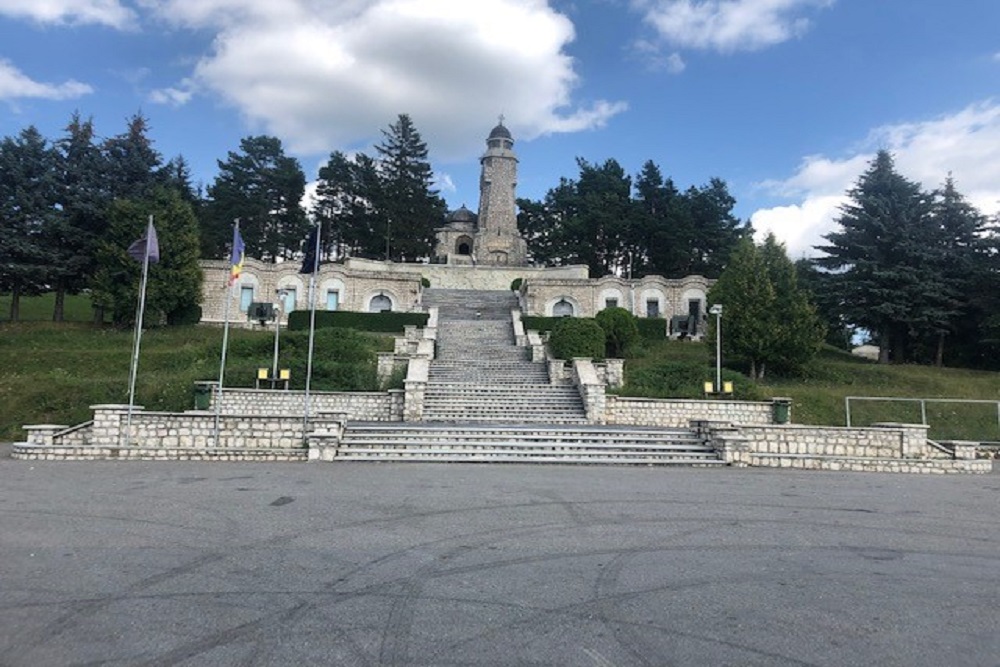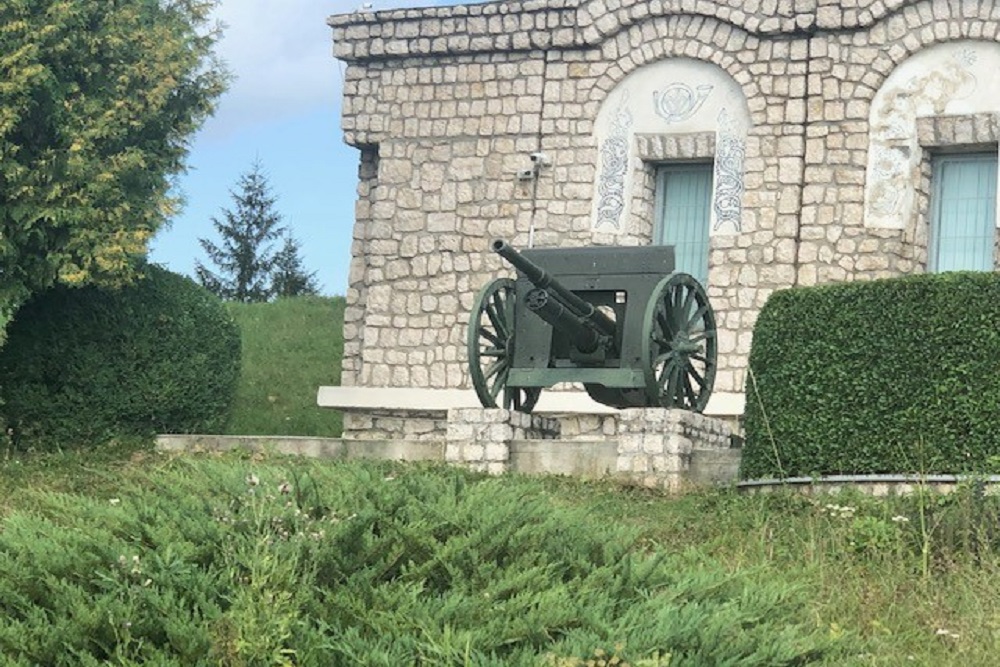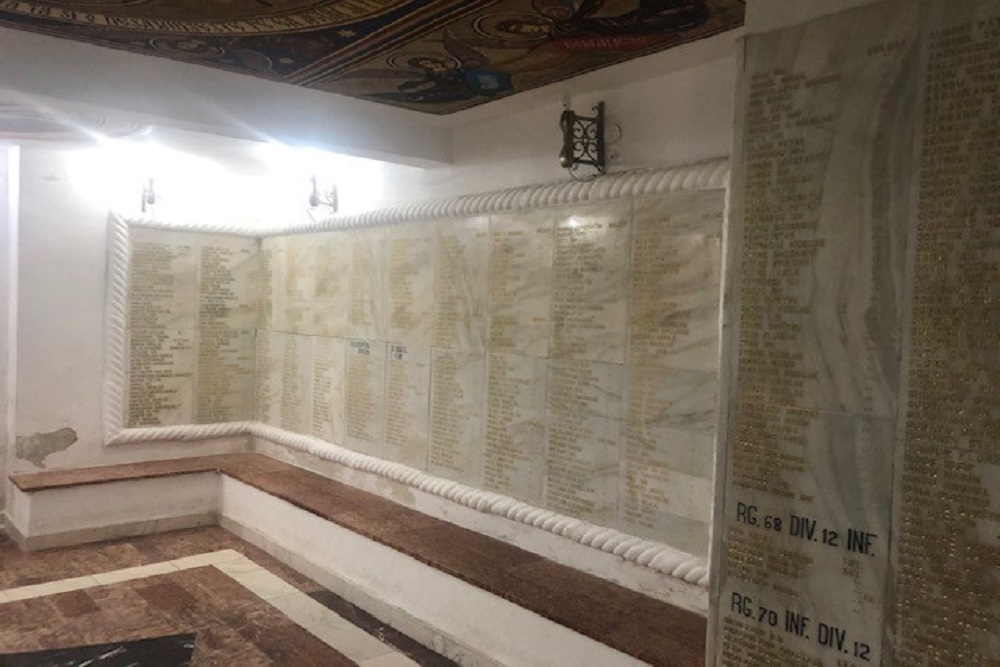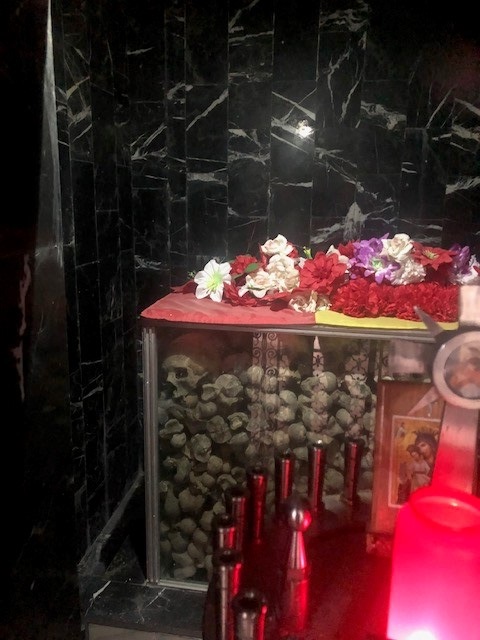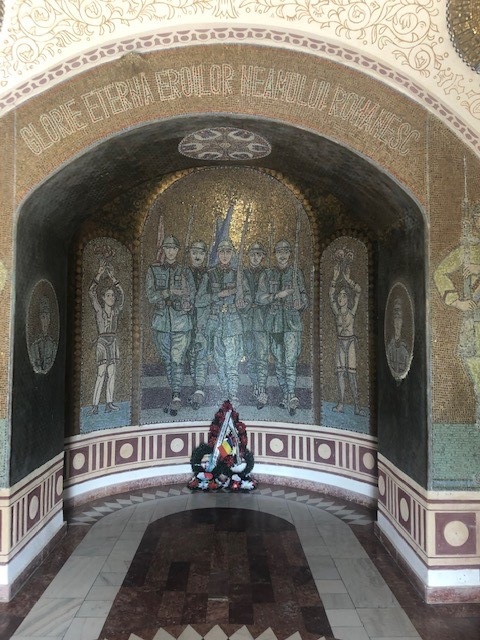Mausoleum Romanian Soldiers Mateias
Mount Mateias was one of the areas where the Romanian soldiers of the 22nd and 12th division (the Nămăești group) created a blocking position against the German and Austrian troops coming from the Brasov area via the Rucăr -Bran pass.
During the battle that lasted from the 8th of October 1916 till the 29th of November 1916 the German plan was a frontal attack with the German 76th Infantry division while at the same time using the 8th Austro-Hungarian Mountain Brigade to create an enveloping manoeuvre on the West side of the Dămbovița valley through Rucăr to attack Dragoslavele and try to encircle the Romanian troops
Initially the 8th Austro-Hungarian Mountain Brigade seized Rucăr by flanking the forces in the Bran pass by going via Zărnești and the beginning of the Dâmbovița valley . On the 16th of October de Germans occupied, after being reinforced with the 12th Bavarian Infantry division Dragoslavele. The Romanian 22nd division felt back towards Mount Mateias and the surrounding area. At the same time the 8th Mountain Brigade attacked Lerești, but bad weather and limited pack animals prevented them in first instance to occupy it.
The 22nd Division had reached in the meantime a strength of 25% and moral was very low, therefore the army leaders visited the troops in the frontline to boost the moral and on the 27th of October the Romanian troops attacked once again. This forced the 8th Mountain Brigade to give up Lerești and consequently put more pressure on the 12th Bavarian Infantry division, which was pushed back from Dragoslavele by the Romanian soldiers. The Romanians took 300 prisoners.
Only when the front at the Jiu River broke the 2 divisions had to retreat to Targoviste to avoid encirclement.
The 70th infantry regiment, which was made up of people of this region (see also: Information Panel First World War) received the Mihai Viteazal order for the "courage and enthusiasm of their soldiers" from King Ferdinand.
The Mausoleum (picture 1 and 2) was built between between 1928 and 1935 and completely restored in 1980 after an earthquake, they also added then the museum
In 31 crypts (picture 3) the remains of more than 2300 Romanian soldiers can be found and it also includes a transparent Sarcophagus (picture 4) with the remains of 416 unknown Romanian Soldiers.
Further this mausoleum consist also of a Tower and a Chapel (picture 5), with mosaics of showing scenes of the First World war.
Do you have more information about this location? Inform us!
Source
- Text: Kaj Metz & Gio Theunissen
- Photos: Gio Theunissen
- BARRETT, MICHAEL B., Prelude to Blitzkrieg:, Indiana University Press, 2013.
- TORREY, GLENN E., The Romanian Battlefront in World War I, United States, 2011.
Related books
Nearby
Museum
Point of interest
Monument
- War Memorial Voinești - Voinești
- Memorial Stone Military Cemetery Lerești - Lerești
- Memorial for the Fallen Soldiers - Dragoslavele
